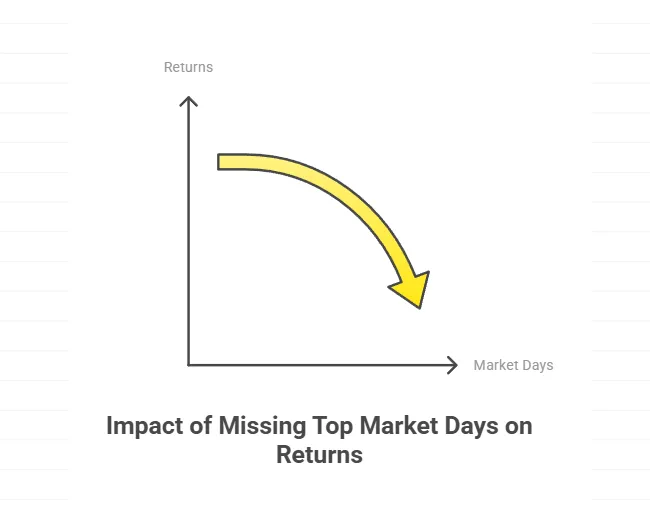
How Tariffs, Inflation, and Interest Rates Affect Your Investments: Navigating Market Risk with Confidence
Understanding Economic Forces That Impact Your Investments
As a CERTIFIED FINANCIAL PLANNER™ who helps clients weather both smooth and turbulent markets, I often say that financial planning isn’t just about numbers—it’s about perspective. Especially during times of uncertainty, it’s important to understand the why behind the headlines.
From rising interest rates and tariffs to inflation and geopolitical events, today’s investors are constantly navigating waves of economic influence. Some of these factors can make markets more volatile, and others introduce new risks. But with the right plan, perspective, and strategy, you can stay grounded and focused on your long-term goals.
Let’s break down these economic forces and what they mean for you.
Inflation: The Quiet Erosion of Purchasing Power
Inflation reduces the buying power of your dollars over time. It’s a natural part of any growing economy—but when it spikes, your money doesn’t go as far.
📉 Example: In 2000, a loaf of bread cost around $1.72. Today, it averages over $3.50. That’s inflation in action.
While modest inflation (2–3%) is expected, rapid inflation can:
- Eat into fixed incomes (like pensions or bond interest)
- Require your investments to grow faster just to maintain the same lifestyle
- Increase the cost of everyday goods and services
How to combat it: Invest in assets that historically outpace inflation—such as equities, real estate, and inflation-protected securities.
Read: Explore full-spectrum strategies for your financial future.
Interest Rates: The Lever Behind Loans and Growth
Interest rates affect everything from mortgage payments to credit cards—and yes, your investments.
When interest rates rise:
- Bond prices usually fall
- Stocks may become more volatile (especially growth stocks)
- Consumer borrowing slows
- Savings accounts and CDs offer higher yields
📊 2023 Example: The Federal Reserve raised interest rates 11 times between March 2022 and August 2023, leading to the highest rates since 2007.
Why Bond Prices Fall When Interest Rates Rise: Bonds and interest rates have an inverse relationship. When rates rise, new bonds are issued with higher yields. Existing bonds paying lower interest become less attractive, causing their market value to drop.
🔄 Example: If you hold a bond that pays 3%, and new bonds are paying 5%, investors will only buy your bond if it’s sold at a discount.
The longer a bond’s duration, the more its price reacts to interest rate changes. That’s why long-term bonds typically fall more when rates rise.
📈 Silver Lining: When bond prices fall, it creates opportunity. Investors can purchase bonds at a discount—often locking in more attractive yields relative to what they paid. This can enhance long-term income potential, especially for those reinvesting regularly or laddering bond maturities.
Why it matters: High rates mean higher borrowing costs but can also reward savers. A diversified strategy balances both sides of this equation.
Learn: Why your savings rate matters more than investment returns.
Tariffs and Trade Tensions: The Global Domino Effect
Tariffs are taxes placed on imported goods. While they aim to protect domestic industries, they often lead to:
- Higher prices for consumers
- Retaliatory tariffs from other countries
- Supply chain disruptions
🧭 Real-world example: In 2018, U.S. steel and aluminum tariffs triggered higher construction and car prices. The back-and-forth between global markets caused investor uncertainty—and short-term volatility.
That said, not all tariffs are bad. In some cases, they can encourage domestic production, support national security interests, or help balance trade deficits. Certain industries, like U.S.-based agriculture or manufacturing, may benefit when tariffs level the playing field against foreign subsidies.
However, it's important to consider the long-term effects. Overuse or unpredictability of tariffs can harm global trade relations and corporate earnings—two major components of market performance.
Tariffs create sector-specific risk (e.g., agriculture, tech, manufacturing). Understanding how your portfolio is exposed to global trade helps you navigate these shifts.
Read: Compare retirement account types and contribution strategies
Market Volatility vs. Risk: What’s the Difference?
Think of volatility as the ups and downs—the rollercoaster ride of investing. It’s completely normal and even necessary for long-term growth.
Risk, on the other hand, is the possibility of permanent loss. It’s the chance that something fundamental goes wrong.
🎢 “Volatility is like riding a never-ending roller coaster. Risk is taking the chance that the coaster builders didn’t finish building the track in time.”
🎢 Volatility might make your stomach queasy. Risk can break your heart—especially if you lose your hard-earned money.
Volatility is temporary. Risk can be permanent. Great financial planning helps you ride out the former and minimize the latter.
Why Emotional Investing Often Backfires
Trying to time the market based on fear or economic news can be harmful.
📊 JP Morgan Study: Between 2003 and 2023, if an investor missed the 10 best days in the market, their annualized return dropped from 9.7% to just 5.2%. Most of those “best days” came within two weeks of the worst days—meaning those who exited during downturns likely missed the rebound.
Myth: “I’ll get out now and jump back in when it’s better.”
Truth: Market timing almost always leads to missed opportunities.
📉 DALBAR Study: Over a 20-year span, the average investor earned 1.5%–4% less annually than the market due to behavioral mistakes such as panic selling and buying high.
Lesson: Emotions are one of the greatest threats to long-term performance. Staying invested and sticking to your strategy usually pays off.
How to Identify Where We Are in the Market Cycle
Market cycles move through four broad phases:
- Expansion – economy grows, low unemployment
- Peak – inflation may rise, interest rates increase
- Contraction (Recession) – GDP slows, unemployment rises
- Recovery – stabilization and renewed growth
📌 Important note: We usually don’t know we’re in a recession until it’s confirmed in hindsight—often 6+ months later.
That’s why reactionary investing is risky. Instead, build a plan that accounts for each cycle.
What Historically Performs Well in Each Cycle
While past performance doesn't guarantee future results, historical trends can offer insight:
- Expansion: Growth stocks, emerging markets
- Peak: Commodities, inflation-protected bonds
- Recession: Defensive sectors like healthcare and utilities
- Recovery: Small-cap stocks, cyclicals, high-yield bonds
Understanding these patterns helps with tactical asset allocation. However, consistent contributions and staying invested matter more than timing.
Read: Build a mindset that thrives in any economic environment.
Update Your Goals and Risk Tolerances
As the market shifts, so can your personal situation. That's why regular reviews of your financial goals and risk tolerance are essential.
Investments should align with your:
- Time horizon
- Financial goals
- Emotional comfort with market swings
Being out of alignment can create unnecessary stress during downturns. A properly aligned plan brings peace of mind—even during volatility. See JP Morgan’s latest Guide to the Markets.
Final Thoughts: Navigating the Economic Crosswinds
In times of uncertainty, knowledge is power—and planning is peace of mind.
The economy will always shift. Inflation, interest rates, tariffs, and trade dynamics will continue to evolve. But by understanding their impact and sticking to a disciplined strategy, you avoid costly mistakes and stay on the path to your goals.
📩 Ready to invest with clarity and confidence? Let’s build a plan that works—no matter what the economy is doing.
FAQs About How Economic Forces Impact Your Investments
1. How does inflation affect my investments?
Inflation erodes purchasing power over time, meaning your money buys less in the future. If your investments aren’t growing faster than inflation, you’re losing ground. Assets like stocks, real estate, and Treasury Inflation-Protected Securities (TIPS) are commonly used to help outpace inflation.
2. Why do interest rates impact the stock and bond markets so much?
Rising interest rates typically cause bond prices to fall and can make stocks more volatile—especially growth-oriented companies. Higher rates increase borrowing costs for consumers and businesses, slowing down economic activity. However, they also benefit savers through improved yields on CDs, savings accounts, and short-term bonds.
3. What’s the connection between tariffs and my portfolio performance?
Tariffs affect the global economy by raising costs for goods and straining international trade relationships. This can hurt corporate earnings, especially for companies dependent on global supply chains. Tariff policies often create sector-specific volatility, so it’s important to diversify and understand your exposure.
4. What’s the difference between market volatility and investment risk?
Volatility is the normal up-and-down movement of the market. Risk is the potential for permanent loss of capital. Volatility is short-term and emotional; risk is long-term and structural. A good financial plan helps you manage both by staying diversified and aligned with your goals.
5. Should I change my investments during a recession or market downturn?
Not necessarily. Emotional investing—reacting to market headlines—often leads to costly mistakes. Historically, the best market days follow the worst ones. Staying invested with a long-term strategy is typically more effective than trying to time the market.
6. How do I know what part of the market cycle we’re in?
Market cycles aren’t labeled in real time, and economic data is often delayed. Instead of trying to predict the cycle, focus on building a portfolio that works through all phases—expansion, peak, contraction, and recovery.
7. What types of investments perform well during high inflation or rising rates?
Historically, commodities, energy stocks, inflation-protected bonds (TIPS), and value stocks have done well in inflationary or high-interest rate environments. However, performance varies, and asset allocation should reflect your overall financial plan—not just current headlines.
8. How often should I review my investment strategy?
At least annually—or whenever a major life change occurs (job change, retirement, new child, etc.). Rebalancing your portfolio and updating your risk tolerance ensures your investments stay aligned with your personal goals and market realities.






